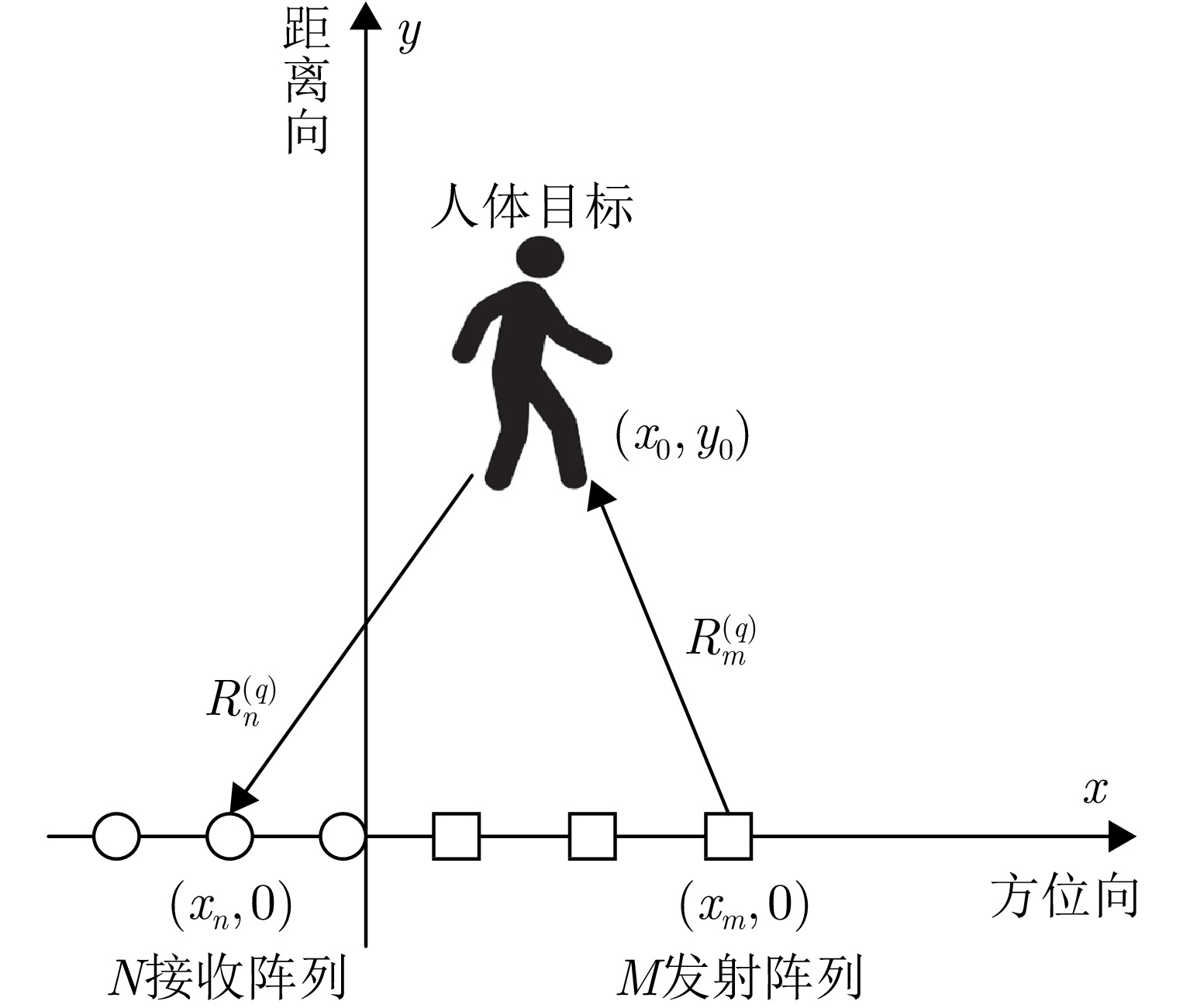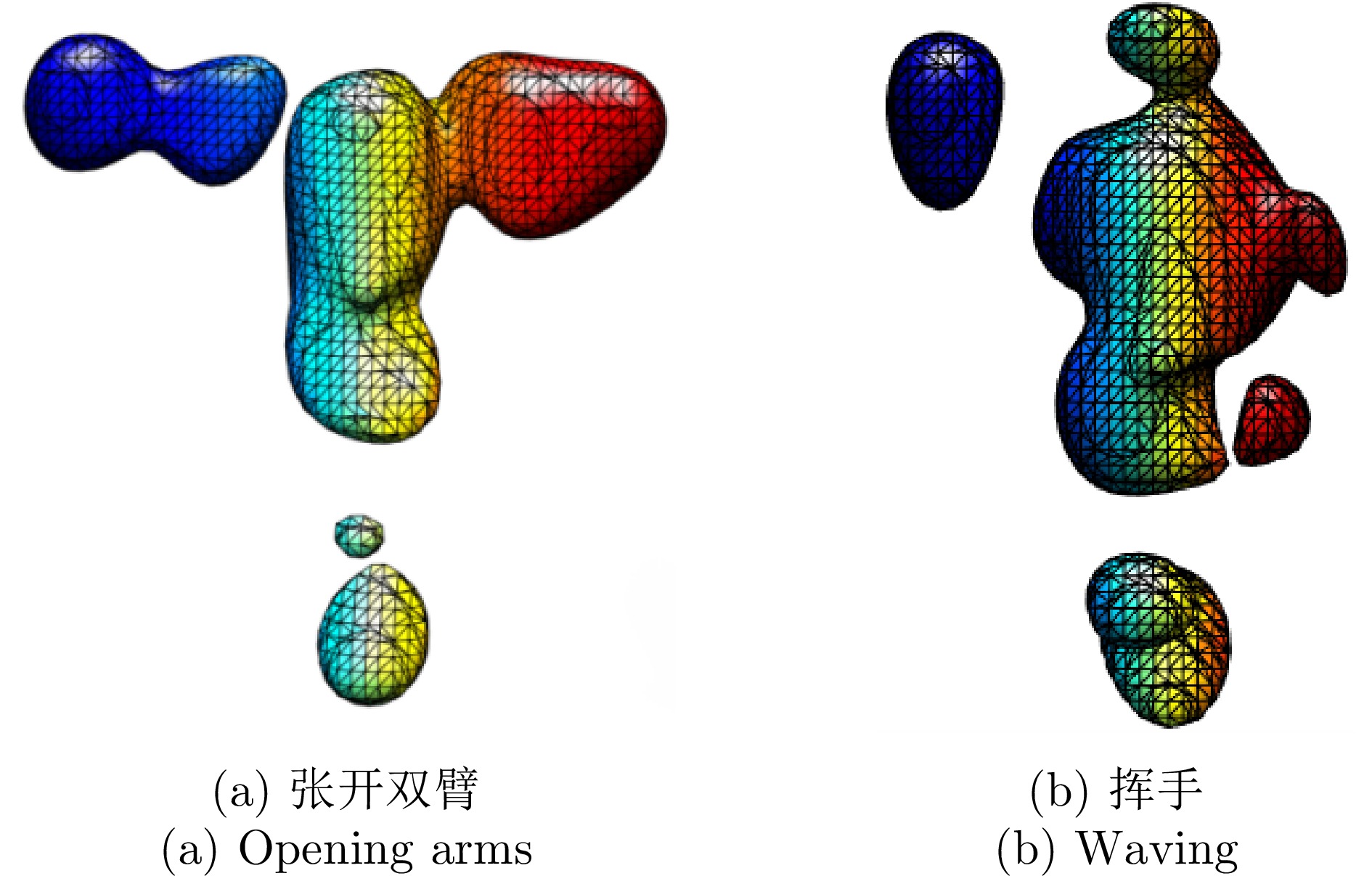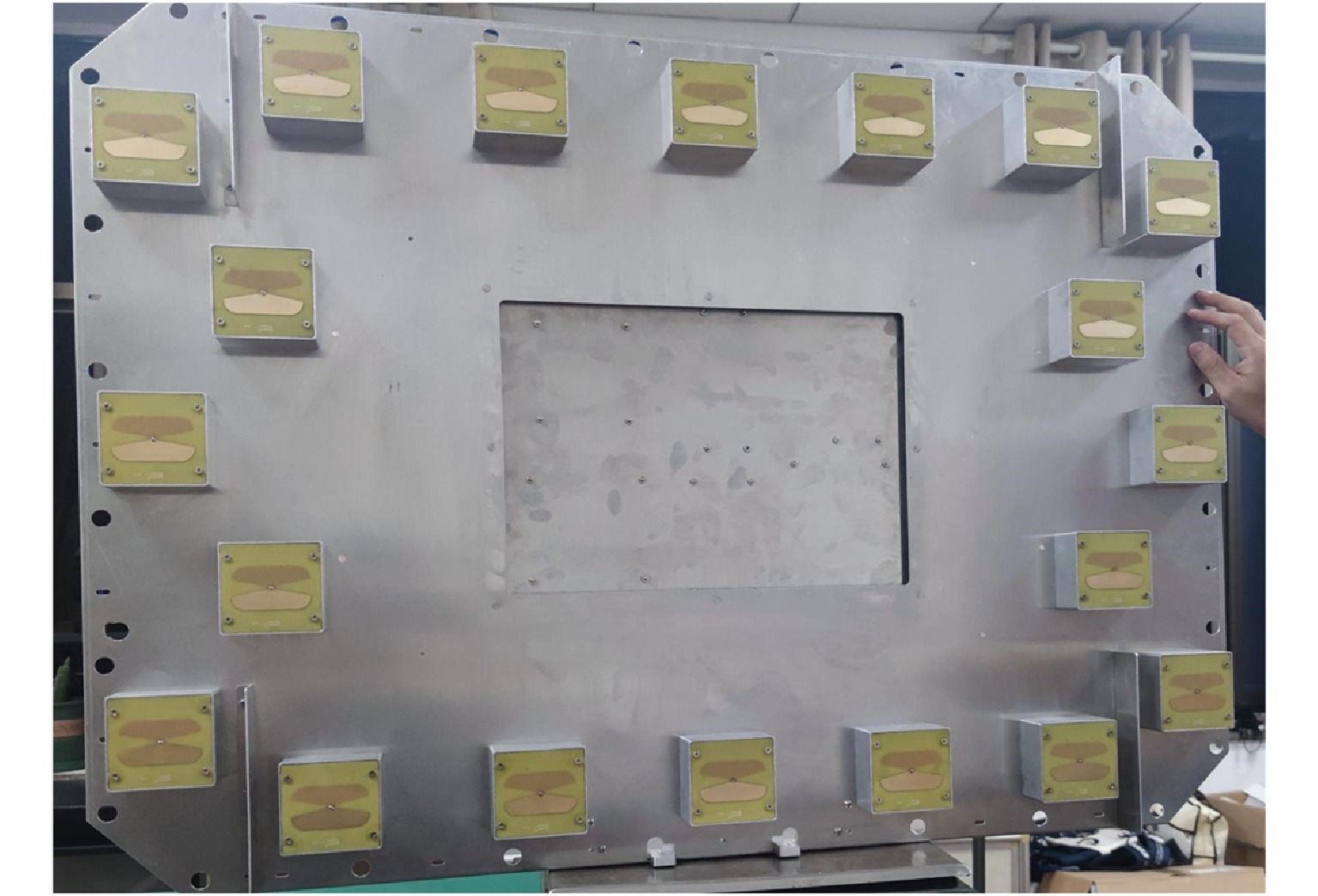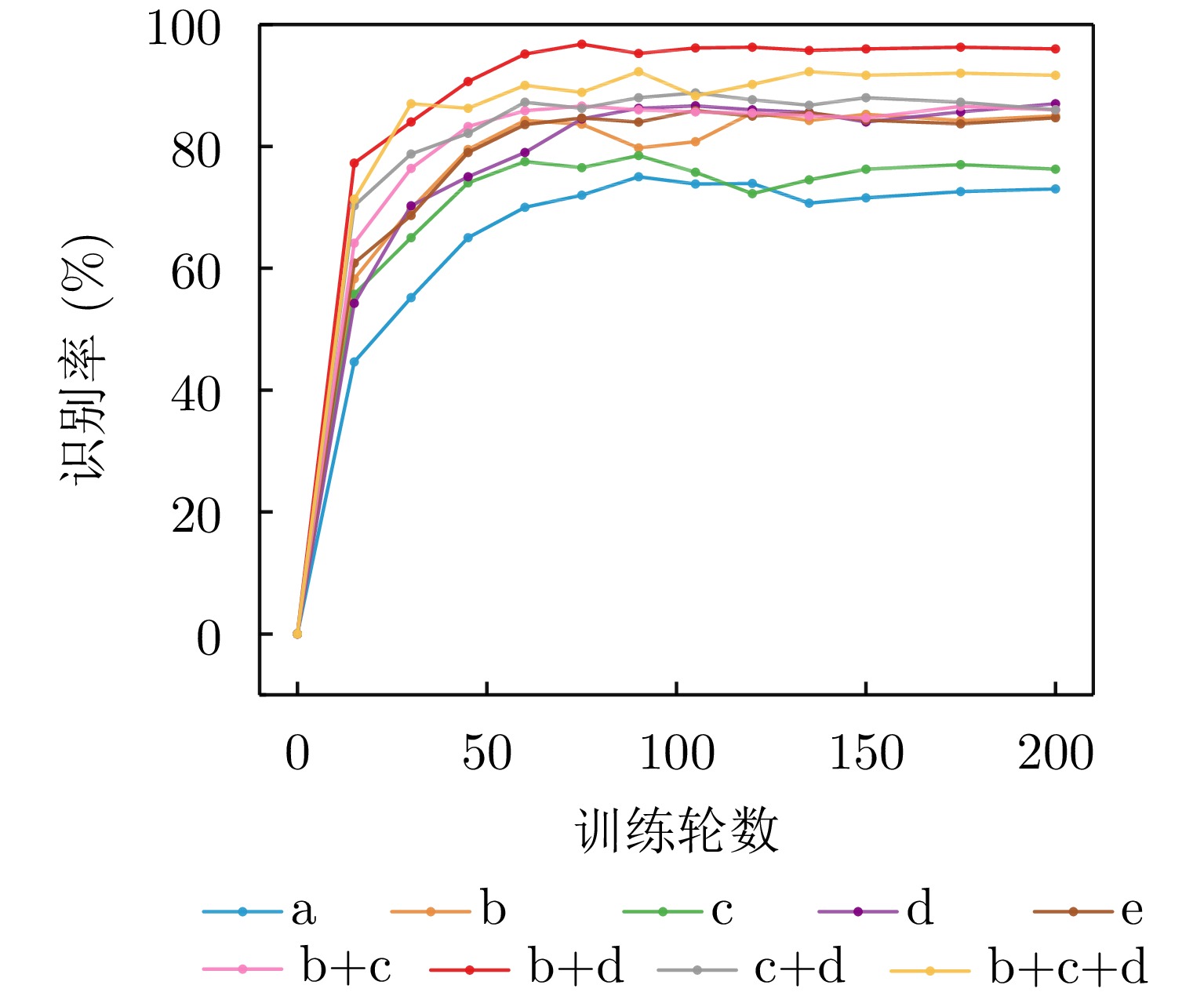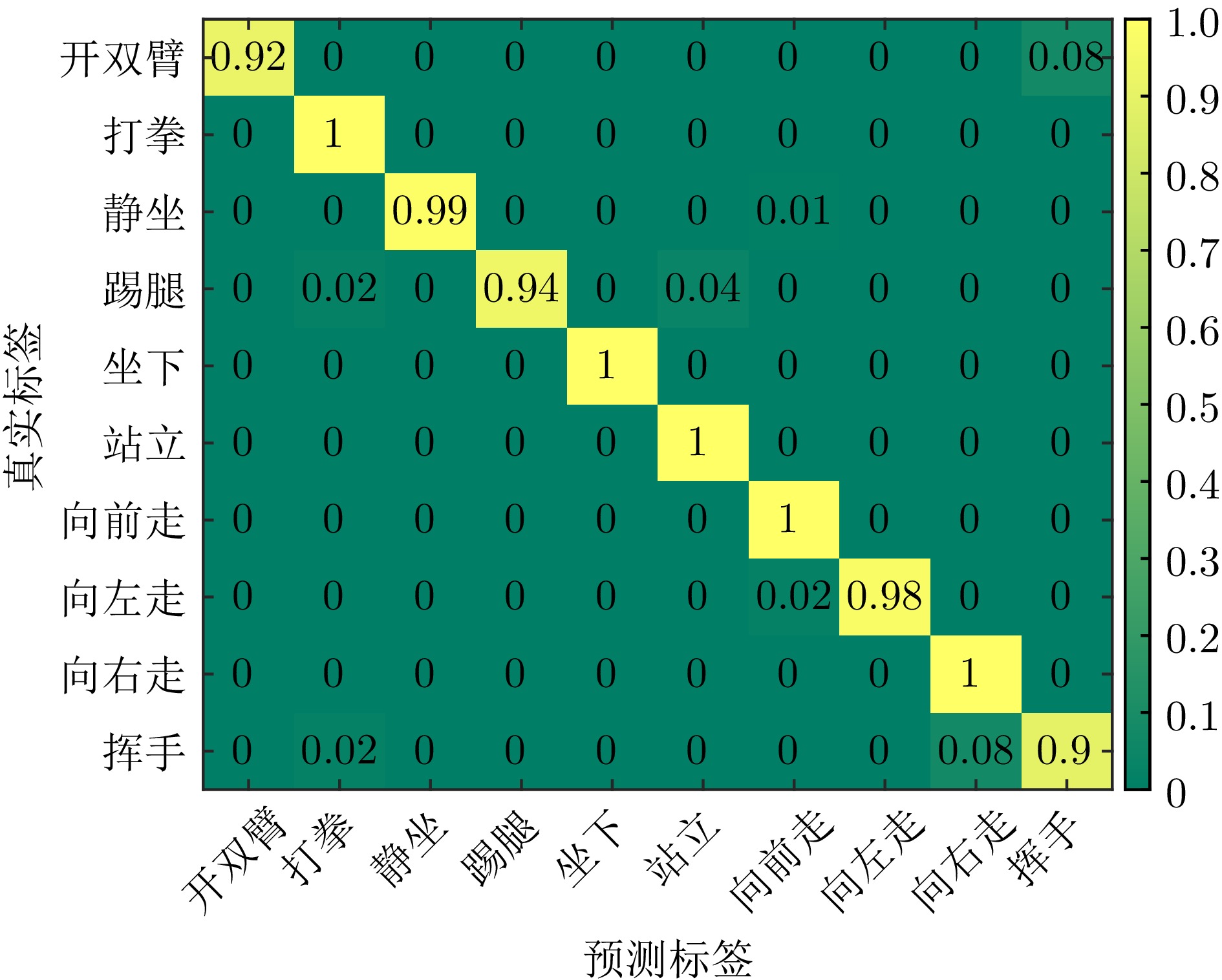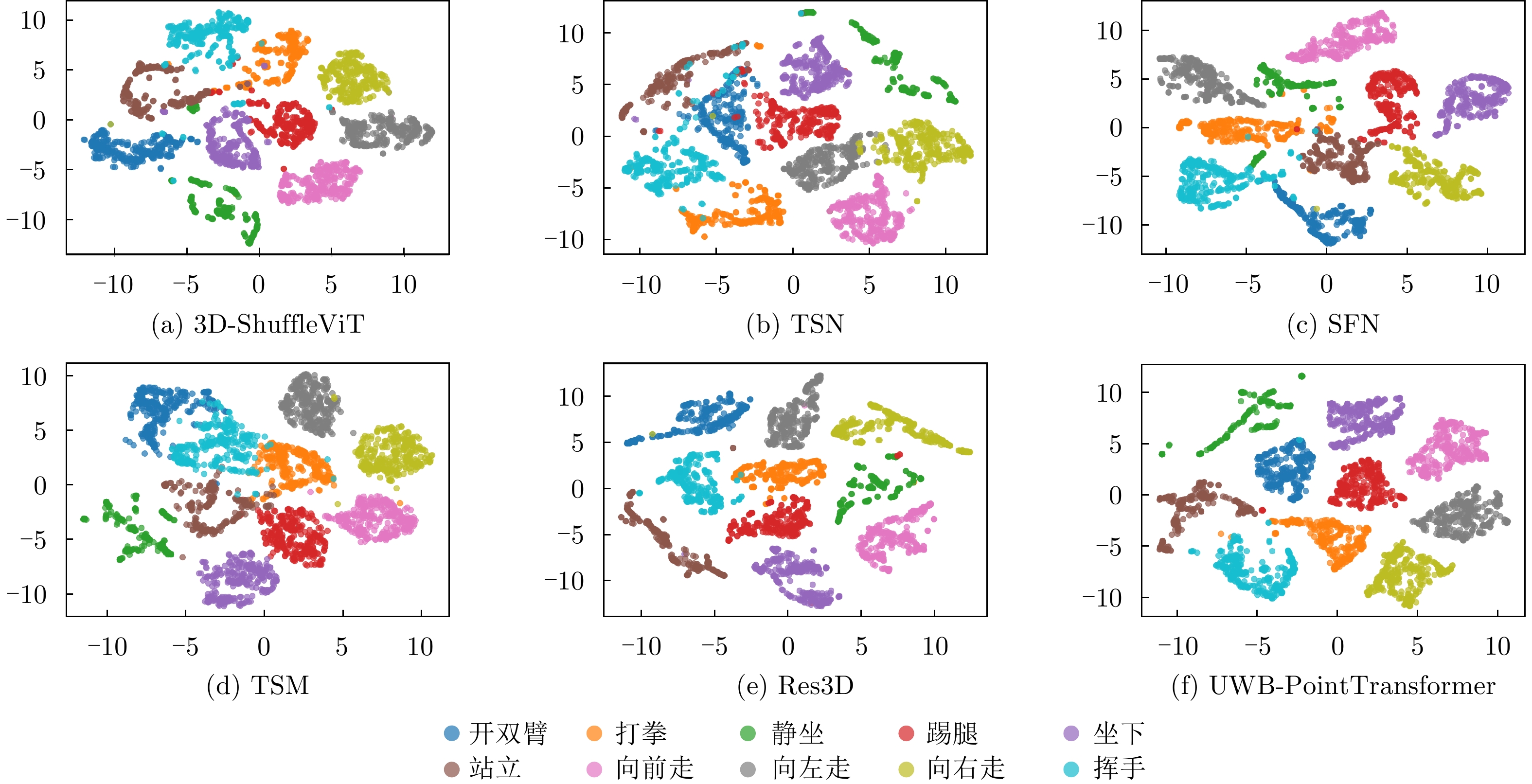Article Navigation >
Journal of Radars
>
2024
> Online First
| Citation: | SONG Yongkun, YAN Tianxing, ZHANG Ke, et al. A lightweight human activity recognition method for ultra-wideband radar based on spatiotemporal features of point clouds[J]. Journal of Radars, in press. doi: 10.12000/JR24110 |
A Lightweight Human Activity Recognition Method for Ultra-wideband Radar Based on Spatiotemporal Features of Point Clouds
DOI: 10.12000/JR24110
More Information-
Abstract
Low-frequency Ultra-WideBand (UWB) radar offers significant advantages in the field of human activity recognition owing to its excellent penetration and resolution. To address the issues of high computational complexity and extensive network parameters in existing action recognition algorithms, this study proposes an efficient and lightweight human activity recognition method using UWB radar based on spatiotemporal point clouds. First, four-dimensional motion data of the human body are collected using UWB radar. A discrete sampling method is then employed to convert the radar images into point cloud representations. Because human activity recognition is a classification problem on time series, this paper combines the PointNet++ network with the Transformer network to propose a lightweight spatiotemporal network. By extracting and analyzing the spatiotemporal features of four-dimensional point clouds, end-to-end human activity recognition is achieved. During the model training process, a multithreshold fusion method is proposed for point cloud data to further enhance the model’s generalization and recognition capabilities. The proposed method is then validated using a public four-dimensional radar imaging dataset and compared with existing methods. The results show that the proposed method achieves a human activity recognition rate of 96.75% while consuming fewer parameters and computational resources, thereby verifying its effectiveness. -

-
References
[1] SUN Zehua, KE Qiuhong, RAHMANI H, et al. Human action recognition from various data modalities: A review[J]. IEEE Transactions on Pattern Analysis and Machine Intelligence, 2023, 45(3): 3200–3225. doi: 10.1109/TPAMI.2022.3183112.[2] PAREEK P and THAKKAR A. A survey on video-based human action recognition: Recent updates, datasets, challenges, and applications[J]. Artificial Intelligence Review, 2021, 54(3): 2259–2322. doi: 10.1007/s10462-020-09904-8.[3] 元志安, 周笑宇, 刘心溥, 等. 基于RDSNet的毫米波雷达人体跌倒检测方法[J]. 雷达学报, 2021, 10(4): 656–664. doi: 10.12000/JR21015.YUAN Zhian, ZHOU Xiaoyu, LIU Xinpu, et al. Human fall detection method using millimeter-wave radar based on RDSNet[J]. Journal of Radars, 2021, 10(4): 656–664. doi: 10.12000/JR21015.[4] KONG Yu and FU Yun. Human action recognition and prediction: A survey[J]. International Journal of Computer Vision, 2022, 130(5): 1366–1401. doi: 10.1007/s11263-022-01594-9.[5] LI Maosen, CHEN Siheng, CHEN Xu, et al. Actional-structural graph convolutional networks for skeleton-based action recognition[C]. 2019 IEEE/CVF Conference on Computer Vision and Pattern Recognition, Long Beach, USA, 2019: 3590–3598. doi: 10.1109/CVPR.2019.00371.[6] 杨小鹏, 高炜程, 渠晓东. 基于微多普勒角点特征与Non-Local机制的穿墙雷达人体步态异常终止行为辨识技术[J]. 雷达学报, 2024, 13(1): 68–86. doi: 10.12000/JR23181.YANG Xiaopeng, GAO Weicheng, and QU Xiaodong. Human anomalous gait termination recognition via through-the-wall radar based on micro-Doppler corner features and Non-Local mechanism[J]. Journal of Radars, 2024, 13(1): 68–86. doi: 10.12000/JR23181.[7] SONG Yongkun, DAI Yongpeng, JIN Tian, et al. Dual-task human activity sensing for pose reconstruction and action recognition using 4-D imaging radar[J]. IEEE Sensors Journal, 2023, 23(19): 23927–23940. doi: 10.1109/JSEN.2023.3308788.[8] DUAN Haodong, ZHAO Yue, CHEN Kai, et al. Revisiting skeleton-based action recognition[C]. 2022 IEEE/CVF Conference on Computer Vision and Pattern Recognition, New Orleans, USA, 2022: 2959–2968. doi: 10.1109/CVPR52688.2022.00298.[9] JARAMILLO I E, JEONG J G, LOPEZ P R, et al. Real-time human activity recognition with IMU and encoder sensors in wearable exoskeleton robot via deep learning networks[J]. Sensors, 2022, 22(24): 9690. doi: 10.3390/s22249690.[10] PESENTI M, INVERNIZZI G, MAZZELLA J, et al. IMU-based human activity recognition and payload classification for low-back exoskeletons[J]. Scientific Reports, 2023, 13(1): 1184. doi: 10.1038/s41598-023-28195-x.[11] 王秉路, 靳杨, 张磊, 等. 基于多传感器融合的协同感知方法[J]. 雷达学报(中英文), 2024, 13(1): 87–96 doi: 10.12000/JR23184.WANG Binglu, JIN Yang, ZHANG Lei, et al. Collaborative perception method based on multisensor fusion[J]. Journal of Radars, 2024, 13(1): 87–96. doi: 10.12000/JR23184.[12] 丁一鹏, 厍彦龙. 穿墙雷达人体动作识别技术的研究现状与展望[J]. 电子与信息学报, 2022, 44(4): 1156–1175. doi: 10.11999/JEIT211051.DING Yipeng and SHE Yanlong. Research status and prospect of human movement recognition technique using through-wall radar[J]. Journal of Electronics & Information Technology, 2022, 44(4): 1156–1175. doi: 10.11999/JEIT211051.[13] NIU Kai, WANG Xuanzhi, ZHANG Fusang, et al. Rethinking Doppler effect for accurate velocity estimation with commodity WiFi devices[J]. IEEE Journal on Selected Areas in Communications, 2022, 40(7): 2164–2178. doi: 10.1109/JSAC.2022.3155523.[14] LECUN Y, BOSER B, DENKER J S, et al. Backpropagation applied to handwritten zip code recognition[J]. Neural Computation, 1989, 1(4): 541–551. doi: 10.1162/neco.1989.1.4.541.[15] SEYFIOGLU M S, EROL B, GURBUZ S Z, et al. DNN transfer learning from diversified micro-Doppler for motion classification[J]. IEEE Transactions on Aerospace and Electronic Systems, 2019, 55(5): 2164–2180. doi: 10.1109/TAES.2018.2883847.[16] RANI S, CHOWDHURY A, CHAKRAVARTY T, et al. Exploiting unique state transitions to capture micro-Doppler signatures of human actions using CW radar[J]. IEEE Sensors Journal, 2021, 21(24): 27878–27886. doi: 10.1109/JSEN.2021.3126436.[17] DING Chuanwei, ZHANG Li, CHEN Haoyu, et al. Sparsity-based human activity recognition with pointnet using a portable FMCW radar[J]. IEEE Internet of Things Journal, 2023, 10(11): 10024–10037. doi: 10.1109/JIOT.2023.3235808.[18] 何密, 平钦文, 戴然. 深度学习融合超宽带雷达图谱的跌倒检测研究[J]. 雷达学报, 2023, 12(2): 343–355. doi: 10.12000/JR22169.HE Mi, PING Qinwen, and DAI Ran. Fall detection based on deep learning fusing ultrawideband radar spectrograms[J]. Journal of Radars, 2023, 12(2): 343–355. doi: 10.12000/JR22169.[19] WANG Zhengwei, SHE Qi, and SMOLIC A. Action-net: Multipath excitation for action recognition[C]. 2021 IEEE/CVF Conference on Computer Vision and Pattern Recognition, Nashville, USA, 2021: 13209–13218. doi: 10.1109/CVPR46437.2021.01301.[20] MALIK N U R, ABU-BAKAR S A R, SHEIKH U U, et al. Cascading pose features with CNN-LSTM for multiview human action recognition[J]. Signals, 2023, 4(1): 40–55. doi: 10.3390/signals4010002.[21] WANG Yinghui, ZHU Anlei, MA Haomiao, et al. 3D-ShuffleViT: An efficient video action recognition network with deep integration of self-attention and convolution[J]. Mathematics, 2023, 11(18): 3848. doi: 10.3390/math 11183848.[22] DONG Min, FANG Zhenglin, LI Yongfa, et al. AR3D: Attention residual 3D network for human action recognition[J]. Sensors, 2021, 21(5): 1656. doi: 10.3390/s21051656.[23] QI C R, SU Hao, KAICHUN M, et al. PointNet: Deep learning on point sets for 3D classification and segmentation[C]. 2017 IEEE Conference on Computer Vision and Pattern Recognition, Honolulu, USA, 2017: 77–85. doi: 10.1109/CVPR.2017.16.[24] QI C R, YI Li, SU Hao, et al. PointNet++: Deep hierarchical feature learning on point sets in a metric space[C]. The 31st International Conference on Neural Information Processing Systems, Long Beach, USA, 2017: 5105–5114.[25] VASWANI A, SHAZEER N, PARMAR N, et al. Attention is all you need[C]. The 31st International Conference on Neural Information Processing Systems, Long Beach, USA, 2017: 6000–6010.[26] 郭帅, 陈婷, 王鹏辉, 等. 基于角度引导Transformer融合网络的多站协同目标识别方法[J]. 雷达学报, 2023, 12(3): 516–528. doi: 10.12000/JR23014.GUO Shuai, CHEN Ting, WANG Penghui, et al. Multistation cooperative radar target recognition based on an angle-guided Transformer fusion network[J]. Journal of Radars, 2023, 12(3): 516–528. doi: 10.12000/JR23014.[27] 石跃祥, 朱茂清. 基于骨架动作识别的协作卷积Transformer网络[J]. 电子与信息学报, 2023, 45(4): 1485–1493. doi: 10.11999/JEIT220270.SHI Yuexiang and ZHU Maoqing. Collaborative convolutional transformer network based on skeleton action recognition[J]. Journal of Electronics & Information Technology, 2023, 45(4): 1485–1493. doi: 10.11999/JEIT220270.[28] 韩宗旺, 杨涵, 吴世青, 等. 时空自适应图卷积与Transformer结合的动作识别网络[J]. 电子与信息学报, 2024, 46(6): 2587–2595. doi: 10.11999/JEIT230551.HAN Zongwang, YANG Han, WU Shiqing, et al. Action recognition network combining spatio-temporal adaptive graph convolution and Transformer[J]. Journal of Electronics & Information Technology, 2024, 46(6): 2587–2595. doi: 10.11999/JEIT230551.[29] XIAO Zhiqiang, YE Kuntao, and CUI Guolong. PointNet-transformer fusion network for in-cabin occupancy monitoring with mm-wave radar[J]. IEEE Sensors Journal, 2024, 24(4): 5370–5382. doi: 10.1109/JSEN.2023.3347893.[30] 金添, 宋永坤, 戴永鹏, 等. UWB-HA4D-1.0: 超宽带雷达人体动作四维成像数据集[J]. 雷达学报, 2022, 11(1): 27–39. doi: 10.12000/JR22008.JIN Tian, SONG Yongkun, DAI Yongpeng, et al. UWB-HA4D-1.0: An ultra-wideband radar human activity 4D imaging dataset[J]. Journal of Radars, 2022, 11(1): 27–39. doi: 10.12000/JR22008.[31] SONG Shaoqiu, DAI Yongpeng, SUN Shilong, et al. Efficient image reconstruction methods based on structured sparsity for short-range radar[J]. IEEE Transactions on Geoscience and Remote Sensing, 2024, 62: 5212615. doi: 10.1109/TGRS.2024.3404626.[32] SOUMA R, KIDERA S, and KIRIMOTO T. Fast and accurate permittivity estimation algorithm for UWB internal imaging radar[C]. 2011 3rd International Asia-Pacific Conference on Synthetic Aperture Radar (APSAR), Seoul, Korea (South), 2011: 1–4.[33] ANDERSSON L E. On the determination of a function from spherical averages[J]. SIAM Journal on Mathematical Analysis, 1988, 19(1): 214–232. doi: 10.1137/0519016.[34] CHEN Jiahui, LI Nian, GUO Shisheng, et al. Enhanced 3-D building layout tomographic imaging via tensor approach[J]. IEEE Transactions on Geoscience and Remote Sensing, 2024, 62: 5105614. doi: 10.1109/TGRS.2024.3391282.[35] ASH M, RITCHIE M, and CHETTY K. On the application of digital moving target indication techniques to short-range FMCW radar data[J]. IEEE Sensors Journal, 2018, 18(10): 4167–4175. doi: 10.1109/JSEN.2018.2823588.[36] LORENSEN W E and CLINE H E. Marching cubes: A high resolution 3D surface construction algorithm[J]. ACM SIGGRAPH Computer Graphics, 1987, 21(4): 163–169. doi: 10.1145/37402.37422.[37] HOCHREITER S and SCHMIDHUBER J. Long short-term memory[J]. Neural Computation, 1997, 9(8): 1735–1780. doi: 10.1162/neco.1997.9.8.1735.[38] CHUNG J, GÜLÇEHRE Ç, CHO K, et al. Empirical evaluation of gated recurrent neural networks on sequence modeling[EB/OL]. https://arxiv.org/abs/1412.3555, 2014.[39] TRAN D, RAY J, SHOU Zheng, et al. ConvNet architecture search for spatiotemporal feature learning[EB/OL]. https://arxiv.org/abs/1708.05038, 2017.[40] FEICHTENHOFER C, FAN Haoqi, MALIK J, et al. SlowFast networks for video recognition[C]. 2019 IEEE/CVF International Conference on Computer Vision, Seoul, Korea (South), 2019: 6202–6211. doi: 10.1109/ICCV.2019.00630.[41] WANG Limin, XIONG Yuanjun, WANG Zhe, et al. Temporal segment networks: Towards good practices for deep action recognition[C]. 14th European Conference on European Conference, Amsterdam, The Netherlands, 2016: 20–36. doi: 10.1007/978-3-319-46484-8_2.[42] LIN Ji, GAN Chuang, and HAN Song. TSM: Temporal shift module for efficient video understanding[C]. 2019 IEEE/CVF International Conference on Computer Vision, Seoul, Korea (South), 2019: 7082–7092. doi: 10.1109/ICCV.2019.00718.[43] VAN DER MAATEN L and HINTON G. Visualizing data using t-SNE[J]. Journal of Machine Learning Research, 2008, 9(86): 2579–2605. -
Proportional views

- Figure 1. Frequency-domain diagram of SFCW waveform
- Figure 2. Operating scenarios of MIMO radar systems
- Figure 3. Data of the ‘body’ in the action of spreading arms
- Figure 4. Three-dimensional isosurface diagrams of different actions converted from radar echo data
- Figure 5. Human body models constructed from point clouds of varying quantities
- Figure 6. Schematic diagram of the UWB-PointTransformer network architecture
- Figure 7. Transformer network
- Figure 8. Ultra-wideband MIMO radar array used for data acquisition
- Figure 9. Recognition rate variation with training epochs for different training sets
- Figure 10. Confusion matrix of 10 types of actions
- Figure 11. Radar charts for model’s F1, Recall, Precision parameters
- Figure 12. t-SNE feature embedding visualization
- Figure 13. The human target is performing different actions


 Submit Manuscript
Submit Manuscript Peer Review
Peer Review Editor Work
Editor Work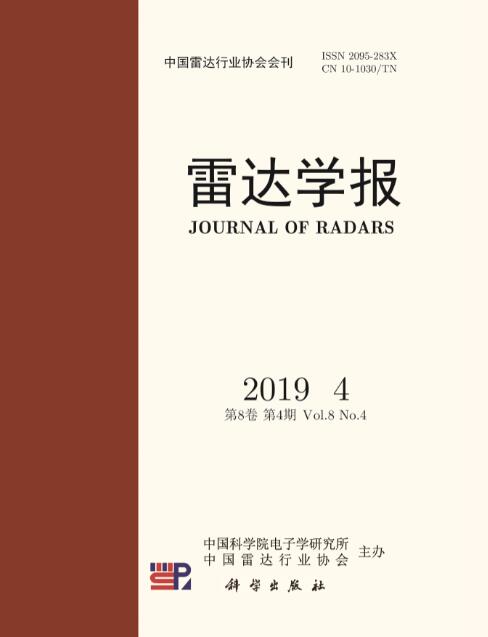





 DownLoad:
DownLoad:
